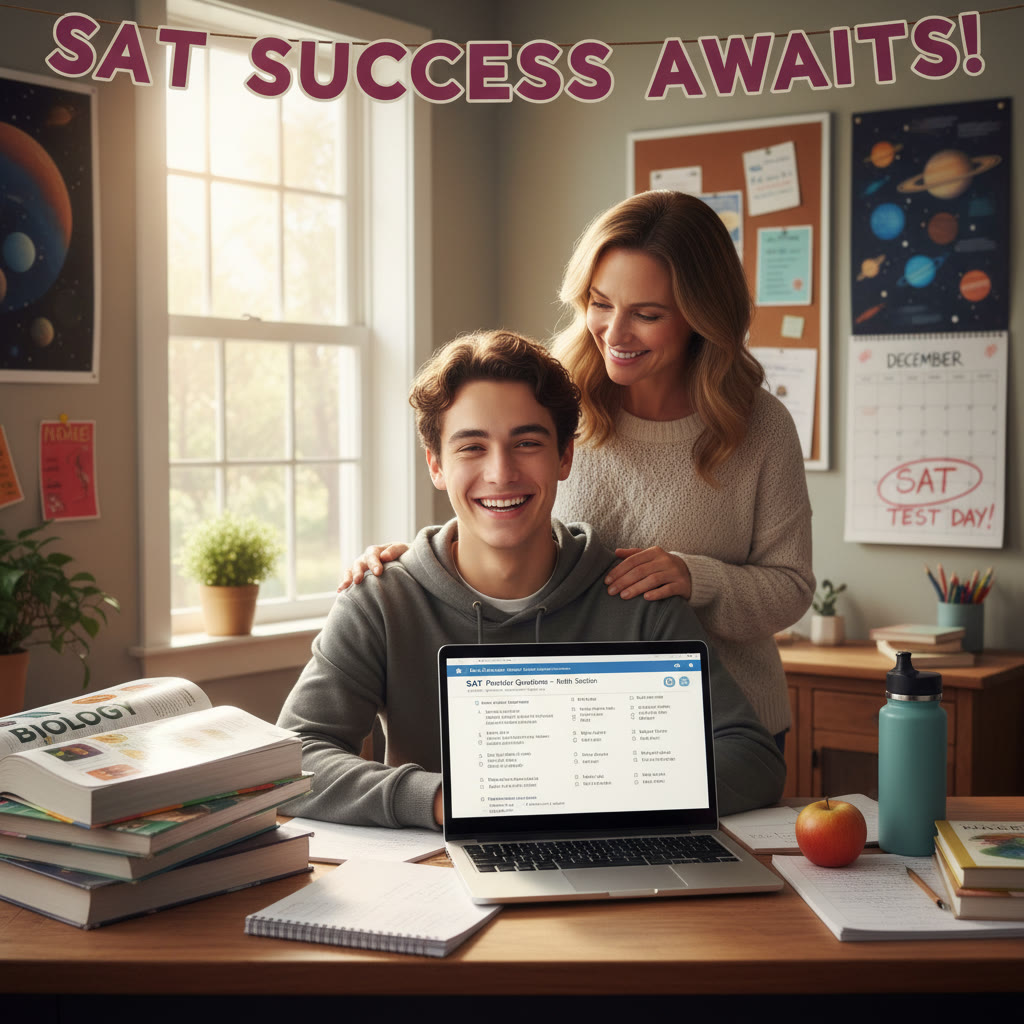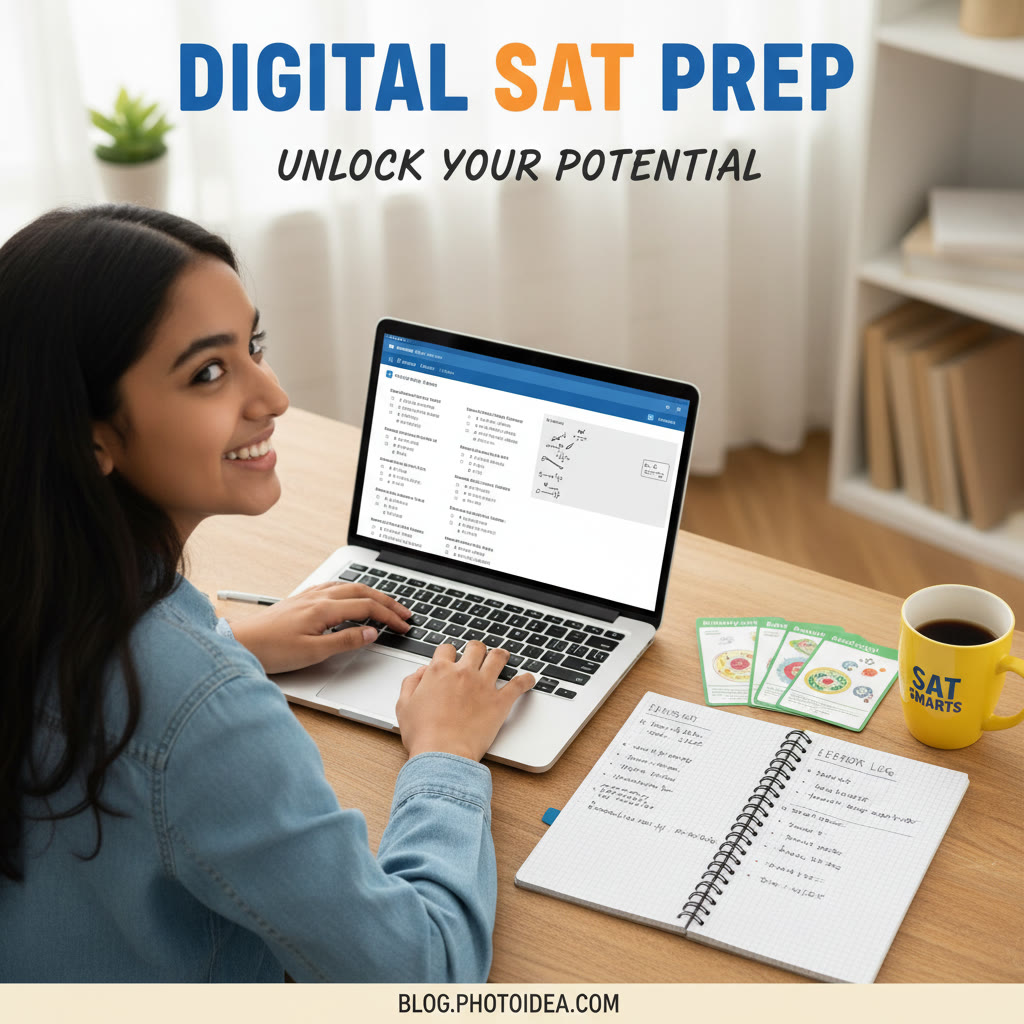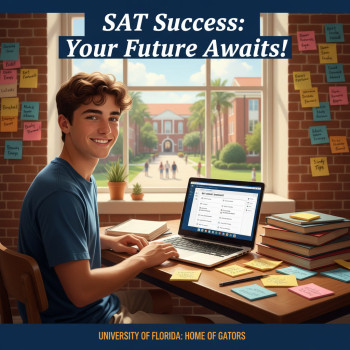Why the SAT Still Matters for Pre‑Med and Life Sciences Applicants
If you or your student is dreaming of a life in medicine, research, or any life sciences field, the college application process can feel like a relay race where every leg matters. Grades, extracurriculars, recommendations—each plays a role. But the SAT remains one of the clearest, standardized ways to show academic readiness across different high schools and curricula. Even as many colleges have shifted test policies in recent years, the SAT (now digital) still helps admissions committees compare applicants and can be especially useful when you want to demonstrate quantitative reasoning, reading stamina, and problem‑solving skills that matter in science majors.

Understanding Current Testing Policies: What Pre‑Med Applicants Need to Know
Test policies vary widely across colleges: some top research universities have reinstated or partially reinstated score requirements, others are test‑optional, and a few use scores for scholarship or placement decisions. For pre‑med and life sciences hopefuls, the key takeaway is this—don’t assume scores don’t matter because a school is test‑optional. A strong SAT score can boost an application, qualify you for merit aid, or strengthen your candidacy when GPAs are similar across applicants.
Here’s how to think about testing status:
- Test‑Required: Submit scores—these schools expect them and will consider them in admissions decisions.
- Test‑Optional: Scores are voluntary. Submit if they strengthen your application relative to GPA or course rigor.
- Test‑Flexible/Test‑Superscore Policies: Some colleges accept other assessments or combine scores from different test dates—understand each school’s rules.
What Top Pre‑Med Programs Look For in SAT Scores
Pre‑med advisors and admissions officers are typically looking for indicators that you can handle intense coursework: calculus or statistics, rigorous biology and chemistry labs, and reading dense scientific material. For selective programs, this often translates to:
- Strong evidence in the math and evidence‑based reading/writing domains
- Consistency across coursework, AP/IB classes, and standardized measures
- Context: a lower score from a student at a highly rigorous high school may be read differently than the same score from a different context
Target SAT Ranges for Pre‑Med & Life Sciences Applicants
While each college is unique, here’s a practical way to set targets. For competitive private and public research universities, aim to fall within or above the middle 50% SAT ranges of admitted students. As a rule of thumb:
- Highly selective programs: Total SAT typically in the upper percentiles—aim for 1400–1600 (Digital SAT scaled equivalently).
- Selective state flagship pre‑med tracks: 1300–1500 is a competitive range.
- Good safety and match schools: 1150–1300 will often be solid—especially when combined with strong grades and science coursework.
Remember: these ranges are general. Some excellent pre‑med students gain admission with lower scores because of impressive research, clinical experience, or upward academic momentum.
How the Digital SAT Changes the Game (and Why It Helps Science Applicants)
The SAT’s transition to a digital format brings a shorter overall test time, adaptive modules, and a testing environment that plays to strategic preparation. For science‑minded students, several features are useful:
- Adaptive sections mean your performance in the first module affects the difficulty of the second—practice realistic digital modules to build confidence.
- Tools like an on‑screen calculator in certain math portions emphasize conceptual problem solving over manual arithmetic.
- Shorter test sessions can improve focus and reduce fatigue—important for students who routinely work long hours in labs or extracurriculars.
Putting Scores in Context: Grades, Rigor, and the Whole Student
Admissions isn’t a numbers game only. For pre‑med and life sciences applicants, consider how SAT scores interact with:
- Course Rigor: AP Biology, AP Chemistry, AP Calculus, and research projects signal readiness for pre‑med tracks.
- GPA Trajectory: improving grades, especially in STEM courses, can offset a lower SAT if you show growth.
- Lab and Clinical Experience: meaningful, sustained commitments weigh heavily—research assistantships, hospital volunteering, and internships tell a story.
Example: Two Applicants, Same Major, Different Paths
Student A: 1480 SAT, 3.7 GPA, meaningful summer research, few leadership roles. Student B: 1350 SAT, 3.95 GPA, founder of a health‑equity club and years of volunteering at a clinic. Admissions committees might view Student A as academically ready based on standardized evidence, while Student B’s demonstrated commitment and academic consistency could make them equally or more compelling—especially when pre‑med advisors seek applicants with sustained human‑service experience. The ideal is to blend both: strong SAT + strong extracurricular narrative.
Strategic SAT Planning for Pre‑Med and Life Sciences Applicants
Here’s a realistic, semester‑by‑semester plan if you’re in sophomore through senior year and aiming for top life sciences programs.
| Timeframe | Focus | Action Items |
|---|---|---|
| Sophomore Year | Foundation | Build strong science/math foundation; take PSAT; start light SAT practice; join science clubs. |
| Junior Year (Fall) | Assess & Plan | Take official Digital SAT practice tests; identify weak areas; schedule a test date for spring. |
| Junior Year (Spring) | Raise Scores | Complete targeted prep (practice modules, timed sections); attempt first official Digital SAT; analyze results. |
| Senior Year (Summer – Fall) | Refine & Retake | Retake if needed; finalize college list with test policies in mind; continue research/clinicals. |
How Many Times Should You Take the SAT?
Many students test 1–3 times. A good approach: prepare thoroughly for a first official test, then evaluate whether a retake is likely to significantly improve your score based on diagnostic data. Colleges often accept superscores (check each college policy), which means you can combine your best section scores from multiple test dates to present the strongest overall profile.
Smart Study: Practical Techniques That Work for Science Students
Studying smarter beats studying longer. Here are proven approaches tailored to pre‑med and life sciences applicants:
- Content + Application: Don’t just memorize formulas—apply them in word problems, graphs, and data interpretation tasks similar to science coursework.
- Active Reading: Practice reading dense science paragraphs and summarizing the main idea, hypothesis, and conclusion—valuable for evidence‑based reading sections.
- Timed Practice: Digital SAT timing is different; simulate the digital interface and time constraints to build pacing strategies.
- Error Logs: Keep a running list of mistakes and categorize them: careless, conceptual, or pacing. Focus on conceptual gaps first.

How Personalized Tutoring Amplifies Your Results
Generalized prep helps, but targeted, personalized instruction can be a game‑changer—especially for students balancing AP labs, research, and extracurriculars. One approach that many families find effective is 1‑on‑1 tutoring that builds a tailored plan around the student’s strengths, weaknesses, and schedule. When tutoring is data‑driven, it quickly identifies the specific types of questions that cost the student points and addresses them efficiently.
Sparkl’s personalized tutoring model—featuring 1‑on‑1 guidance, tailored study plans, expert tutors, and AI‑driven insights—can fit naturally into this strategy. Tutors who understand pre‑med expectations can help students translate test prep into better classroom performance, improve scientific reading comprehension, and target math skills most relevant to life sciences coursework.
What to Expect from Quality 1‑on‑1 Tutoring
- Customized study schedules that respect lab obligations and extracurricular time
- Targeted drills on rationales rather than rote answers
- Regular diagnostic tests to track progress and adjust the plan
- Mentorship on college application storytelling—how to weave SAT performance into a compelling narrative
Beyond Scores: Crafting a Pre‑Med Application That Resonates
Admissions teams want to know: can this student succeed in rigorous science classes and later medical training? That means your application should do more than list accomplishments—it should show development, curiosity, and resilience.
- Research Experience: Quality trumps quantity. A sustained project with real learning and a clear role is better than many short stints.
- Clinical Exposure: Volunteering in clinics or shadowing physicians demonstrates real commitment to medicine as a career.
- Leadership & Service: Leading a project or starting an initiative—especially one tied to health or community—signals initiative.
- Letters of Recommendation: Ask mentors who can speak concretely about scientific inquiry, perseverance, and intellectual curiosity.
How to Choose Target Scores for Each School
Build a simple, realistic target for each college on your list. Use the school’s middle 50% SAT range as a guide and map your score goal to actionable steps (e.g., bridge a 40‑point math gap, improve reading accuracy by eliminating careless errors). Prioritize 3–4 schools to aim your highest efforts at—and treat the rest as strategic backups.
Common Questions from Parents and Students
1. If a school is test‑optional, should my student still submit scores?
Usually yes, if the score strengthens the application relative to GPA and course rigor. If scores are below the school’s demonstrated range and you have strong, compensating strengths (like research and clinical experience), you might opt to omit them. Consider requesting feedback from your counselor or a trusted admissions advisor.
2. What if my student is strong in science but weak in standardized test taking?
Don’t panic. Focused tutoring, targeted practice, and test‑taking strategies can yield meaningful gains. Also, highlight scientific achievements in the application to give evaluators a fuller picture of ability beyond the test score.
3. How important are superscores and multiple test dates?
Many colleges superscore, which helps students present their best sections. Multiple dates provide opportunities to improve, but each additional test should be taken with a clear, data‑driven reason—otherwise, time is better spent strengthening other parts of the application.
Putting It All Together: A Sample Timeline for a Competitive Applicant
This timeline assumes a student entering junior year who aims for top pre‑med or life sciences programs.
- Junior Year Fall: Take PSAT, start Digital SAT diagnostics, join a lab or meaningful summer program list.
- Junior Year Spring: First official Digital SAT after 8–12 weeks of focused prep; begin or deepen research/clinical activities.
- Summer Before Senior Year: Retake SAT if needed; work on application essays and continue research/leadership projects.
- Senior Year Fall: Finalize applications, submit strong teacher recs, and keep academics solid. Use any remaining test dates strategically.
Final Thoughts: Confidence, Consistency, and an Authentic Story
Preparing for pre‑med and life sciences programs is a marathon of steady steps, not a single sprint. The Digital SAT is one important checkpoint—an objective measure that, when combined with rigorous coursework, sustained research or clinical experience, and thoughtful essays, helps admissions committees imagine you thriving in their programs.
Bring curiosity to your prep, be thoughtful about where to invest time, and seek personalized help if you need it. Whether that’s 1‑on‑1 tutoring to shore up math concepts, an AI‑informed study plan to maximize practice efficiency, or a mentor who helps you tell your story, targeted support can accelerate progress. Sparkl’s personalized tutoring model—delivering tailored study plans, expert tutors, and actionable insights—can be the kind of support that fits naturally into a busy pre‑med student’s life.
Above all, remember that admissions teams are looking for future scientists and clinicians who are curious, resilient, and ready to learn. Let your SAT score be a strong, honest signal of your readiness—and let the rest of your application tell the fuller story of who you are and why you belong in the life sciences.
Quick Checklist: Next Steps
- Audit your college list: confirm test policies for each target school.
- Take a full digital practice test under realistic conditions.
- Create an error log and a 12‑week study plan focusing on conceptual gaps.
- Consider 1‑on‑1 tutoring for targeted gains if you need structure or a faster score improvement.
- Maintain or increase involvement in research/clinical experiences—depth beats breadth.
Resources You Can Use
Make practice regular, measurable, and contextually relevant: time blocks for reading dense passages, math sessions focused on data interpretation, and practice labs where you tie test questions back to actual scientific reasoning. And if you decide personalized guidance will help, choose a program that balances test skills with long‑term academic development so your preparation improves not only your SAT score but also your readiness for pre‑med coursework.
Wishing you steady progress and clear focus—this journey is long, but with the right plan and support, it’s utterly achievable.


















No Comments
Leave a comment Cancel